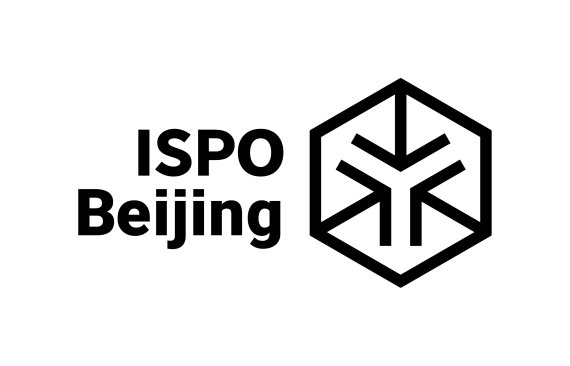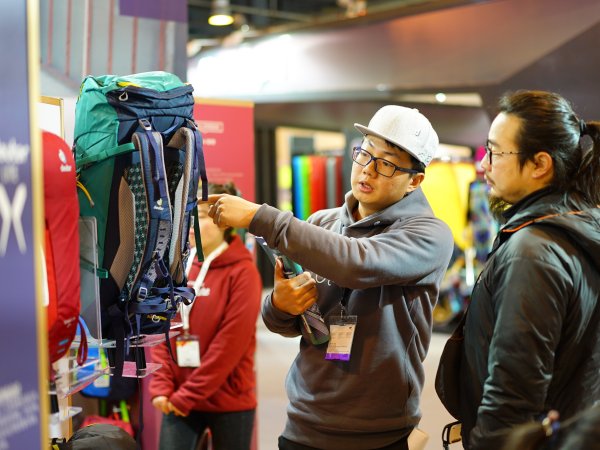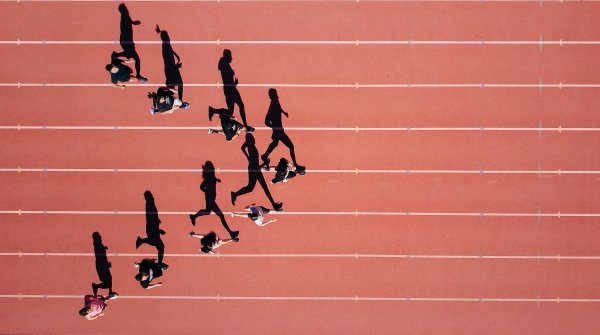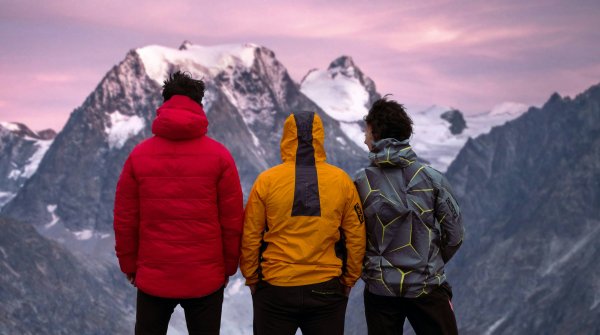- Why does the Chinese market offer such tremendous opportunities?
- How great is the interest in sports and outdoor activities in China?
- How much is the Chinese government pushing the development?
- How has the Chinese sports and outdoor market changed in the last 3 to 4 years?
- What will be particularly important in 2024?
- How do successful brands work in China?
- How do brands establish themselves in China?
- How important are key opinion leaders?
- What is essential for success in the Chinese market?
From a Western perspective, this huge country with a population of over 1.4 billion is often still hard to grasp. Veronica Pang, Group Project Director of ISPO China, recently described the dimensions of sport and outdoor in China with impressive figures at ISPO Munich 2023. There are 980 mountain peaks in the People's Republic that are 5,000 meters or higher - not a single one in Western Europe. 14,298 mountains in China are between 3,000 and 5,000 meters high - a mark that the Zugspitze, the highest German mountain at 2,962 meters, falls just short of. And by 2025, China plans to set up around 10,000 new campsites for its increasingly outdoor-minded population.
The need to catch up after the strict coronavirus restrictions plays a major role in the spectacular growth. "People are longing to be outside again and be allowed to move around," reveals Veronica Pang. On the social media platform XiǎoHóngShū, the Chinese Instagram, posts about hiking and mountaineering achieved 2.5 billion views from January to October 2023 - an increase of 300% compared to the same period last year.
Cycling and biking, the current trend sport par excellence in China, even saw an increase of 400% with 1.3 billion views. Interest in diving and surfing (8 billion views) and camping (6 billion views) was even greater. And the potential is far from exhausted. In China, for example, only around 6 percent of the population jogs and runs. In Germany, the figure is a good 25 percent, in Japan and the USA 29 percent each, in the UK 34 percent and in France 35 percent.
Especially after Corona, the government in Beijing has launched "extensive activities to promote fitness and physical health," says ISPO Director Veronica Pang. In November 2022, eight ministries, including the General Administration of Sport and the National Development and Reform Commission, launched the "Development Plan for the Outdoor Sports Industry (2022 - 2025)". This was the first case of a national policy that prioritized the development of the outdoor industry.
This was followed in October 2023 by the "Action Plan to Promote the Construction and Improvement of Outdoor Sports Facilities (2023 - 2025)". The government is pushing these activities enormously, and companies in this sector are benefiting from this. Beijing is also setting the priorities for development, reveals Veronica Pang: "The key words are safety and sustainability. This is to ensure that the new fans can enjoy their outdoor activities without having to worry about the risks and without causing undue harm to the environment."

Ski touring pioneer Vincent Wang Xiao Yuan is a sought-after expert in this field. He is known in his Chinese community as "Uncle Cho" and is responsible for several winter sports categories at retail giant Alibaba Tmall. He has observed major changes: "The Chinese market has changed a lot in the last four years. We have seen many brands and categories that have grown enormously." He summarizes his learnings in six points.
- Interest:
More and more people in China are interested in fitness, sport and health. However, it is more about the experience, about a pleasant experience, and less about top performance and professionalism. - Channels:
Business has shifted predominantly from offline to online - and almost entirely from the traditional internet to smartphones. - Usage:
Consumers in China are buying sports and outdoor products such as clothing and footwear very much for everyday use, and not just for sport. "They don't get the 600-dollar jacket because they want to go to the mountains, but because they use it to get around town," "Uncle Cho" has found. - Potential:
The range is becoming increasingly diverse and the market ever larger, the China expert knows. "This offers great opportunities for new brands." - Product cycles:
The life cycles for sports and products are shorter in China than elsewhere. Frisbee, for example, was still a huge trend in 2022 - and then slowed down significantly in 2023. One of the effects that promises a lot of sales: "Everything grows and changes very quickly in China. For example, skis or snowboards are changed much more often than in the USA or Europe, every two or three years." - Digital approach:
When reaching customers via digital channels, brands in China rely on very precise and effective analysis. "Whereas in the past, online retail could hardly be tracked, today everything is completely data-driven," explains "Uncle Cho".
Expert Vincent Wang Xiao Yuan aka "Uncle Cho" put forward five theses during his visit to Munich.
- The sports and outdoor market in China continues to grow at a rapid pace.
- Stronger consumer penetration in the apparel and footwear market.
- Opportunities exist in vertical categories such as camping, skiing, cycling, tennis, etc. - with different reasons for growth but similar growth rates.
- Category lifecycles are faster and more digitized, with populations growing rapidly at first and then tending to stagnate.
- The need for accurate consumer communication is increasing.
The image and positioning of a brand in Europe or North America hardly play a role in the Chinese market. Suppliers here are often active in completely different fields. Lululemon, which is primarily known for yoga clothing in Europe, focuses mainly on sporty everyday fashion in China - because yoga has not been very popular there to date. Lululemon's main target group is women, who in China mainly decide what clothes the whole family wears. Salomon focuses less on ambitious athletes and more on casual sportswear. Descente specializes in sporty clothing for the office and workplace. Since 2015, the US company Marmot (German: Murmeltier) has become one of the market leaders for down jackets, which are very popular in China.
"Running a brand in China is very complicated, very challenging - and very interesting." - Wang Yalei, Strategy Director of the Chinese holding company BMAI Sports Group.
Fjällräven from Sweden has successfully positioned its multicolored Kånken backpacks as a fashion accessory since 2014, primarily via social media. And the US bike manufacturer Specialized has established its bikes in China so successfully as a high-quality lifestyle product with an envy factor that its dealers in Beijing had to turn away nine more prospective customers for every bike sold in 2022. At times, delivery quantities were so tight that customers were happy to spend 9,000 dollars on a racing bike - twice the list price.
In the "Double 11" around November 11, 2023, the Chinese "Black Friday", almost half of the 20 most successful suppliers of sports and outdoor goods were Chinese brands - even if some of them don't sound like it. FILA in China, for example, is managed by the domestic sports brand Anta, which is now competing with Nike and Adidas - and not by the FILA holding company from South Korea. The result: in the most recent "Double 11", FILA was number two in the sports sector behind Nike, ahead of parent company Anta, Adidas and the Chinese brand Li-Ning. "If you want to be successful on the Chinese market, you should find a partner there who will run the business with you," recommends Wang Yalei from the BMAI Sports Group. And he adds: "All international brands that operate in China have local branches here."
Key opinion leaders (KOLs) play an exceptionally important role in the Chinese sports industry. They are influential personalities who build bridges between brands and fans on digital platforms. Their recommendations not only increase the visibility of brands. They also create a deeper connection with audiences, drive engagement and shape the sports landscape. And there are many of them that brands can and should win over. At ISPO 2023 in Shanghai alone, over 1,100 KOLs attended, created videos and posts. According to a survey, around a quarter of them have more than 100,000 followers on social media platforms, and one percent even have several tens of millions of followers. The Chinese influencers at ISPO Shanghai were most interested in two categories: 69 percent were interested in all types of outdoor sports, 44 percent in all activities related to camping.
Expert Wang Yalei explains what it comes down to: money - and patience. "Building brand awareness takes time, product iteration and optimization take time." Getting KOL excited about a brand and getting to know the many special features of the Chinese sports and outdoor market requires patience. Just one of countless special features: "shoe counting". Artificial intelligence is used to record which shoe brands runners wear during marathons. This is even more important in China than in the West. Manufacturers, influencers and e-commerce platforms publish extensive statistics that show how the share of brands has developed since the last races. Conclusion: the changes are happening much faster than in North America or Western Europe.

ISPO Beijing 2024
ISPO Beijing from January 12 to 14, 2024 at the CNCC (China National Convention Center) is the perfect entry ticket to the Asian sports market. Chinese and international players in the sports industry use the platform to establish contacts with future partner companies, customers or key opinion leaders (KOL). In addition, ISPO Beijing offers a variety of events and workshops that provide insights into the most important trends, innovations and technologies for the world's largest sports market.

 Sports BusinessSki Mountaineering Goes Olympic: What Milano-Cortina 2026 Means
Sports BusinessSki Mountaineering Goes Olympic: What Milano-Cortina 2026 Means
- ISPO awards
- Mountain sports
- Bike
- Design
- Retail
- Fitness
- Health
- ISPO Job Market
- ISPO Munich
- ISPO Shanghai
- Running
- Brands
- Sustainability
- Olympia
- OutDoor
- Promotion
- Sports Business
- ISPO Textrends
- Triathlon
- Water sports
- Winter sports
- eSports
- SportsTech
- OutDoor by ISPO
- Heroes
- Transformation
- Sport Fashion
- Urban Culture
- Challenges of a CEO
- Trade fairs
- Sports
- Find the Balance
- Product reviews
- Newsletter Exclusive Area
- Magazine







